Don't wanna be here? Send us removal request.
Text
Bibliography
Anon., 2016. The Revenant [image] Available at: http://moviebarcode.tumblr.com/ [Accessed 10 Mar. 2017].
Anon., 2015. Blade Runner [image] Available at: http://moviebarcode.tumblr.com/ [Accessed 10 Mar. 2017].
Barthes, R., 2000. Camera Lucida. 1st ed. London: Vintage, pp.15-96.
Bellour, R., 1987. The Pensive Spectator. Wide Angle. Vol.9. no.1. P.10.
Burgin, V., ‘The Image in Pieces: The Location of Cultural Experience’, in Amelunxen, H., 1997. Photography after photography: memory and representation in the digital age. Amsterdam:G+B Arts.
Campany, D., ‘Posing, Acting, Photography’, in Stillness and Time: Photography and the Moving Image., 2006. ed. by Lowry, J.and Green, D. Brighton: Photoforum and Photoworks.
Crewdson, G., 2006. Untitled. [image] Available at: http://whitecube.com/exhibitions/gregory_crewdson_beneath_the_roses_hoxton_square/ [Accessed 10 Mar. 2017].
Crewdson, G., 2006. Untitled. [image] Available at: http://whitecube.com/exhibitions/gregory_crewdson_beneath_the_roses_hoxton_square/ [Accessed 10 Mar. 2017].
Green, D., ‘Marking Time: Photography, Film and Temporalities of the Image’. in Stillness and Time: Photography and the Moving Image., 2006. ed. by Lowry, J.and Green, D. Brighton: Photoforum and Photoworks.
‘Interview/Lecture’. Transcript, Vol. 2, No.3, 1996 p.5-29
Jeff Wall, ‘Interview/Lecture’, Transcript, Vol 2, no.3, 1996, pp.5-29.
Kracauer, S., 1997. Theory of Film. Princeton, N.J: University Press of California, p.12.
Metz, C., 1974. Film Language: A Semiotics of the Cinema. Oxford: Oxford University Press. Pp.8-9.
Metz, C., 1985. Photography and Fetish. Reprinted in Carol Squiers, ed., The Critical Image: essays on contemporary photography. Seattle: Bay Press.
MODECONNECT., 2017. Exhibition: Cindy Sherman – Untitled Horrors - MODECONNECT. [online] Available at: http://modeconnect.com/project/cindy-sherman-exhibition-kunsthaus-zurich [Accessed 15 Mar. 2017].
Sherman, C., 1985. Untitled #153. [image] Available at: https://www.moma.org/collection/works/56490?locale=en [Accessed 10 Mar. 2017].
Solon, O., 2017. Movies compressed into colourful barcodes. [online] WIRED UK. Available at: http://www.wired.co.uk/article/moviebarcodes-interview [Accessed 4 Mar. 2017].
Stewart, G., 1987. Photogravure: Death, Photography and Film Narrative. Wide Angle. Vol.9. no.6. P.17.
Sugimoto, H., 1978. Pennsylvania Theatre. [image] Available at: http://www.sugimotohiroshi.com/theater.html [Accessed 10 Mar. 2017].
Tate.org.uk. 2017. Jeff Wall: resources and biography. [online] Available at: http://www.tate.org.uk/whats-on/tate-modern/exhibition/jeff-wall/jeff-wall-resources-and-biography [Accessed 4 Mar. 2017].
Wall, J., 1994. Insomnia. [image] Available at:
http://www.tate.org.uk/whats-on/tate-modern/exhibition/jeff-wall/room-guide/jeff-wall-room-6 [Accessed 10 Mar. 2017]
Wollen, P., ‘Fire and Ice’, in Other than itself: Writing Photography., 1989. ed. by Berger, J.X. and Richon, O. Manchester: Cornerhouse Productions.
0 notes
Text
Thoughts on COP3
Working on COP2 has obviously made me think to the future about COP3/ Dissertation. I have began to consider avenue in which I would like to go down for module and I feel the most important thing about it needs to be that the essay is applicable to my professional work. This is in order to allow the research I do, and the time I put in to the module to be valuable to my employability and professional practice. Therefore, I will focus on an essay subject that relates to the commercial and fashion genres of photography, as this is the area in which I almost exclusively work in the real world.
Another thing I definitely need to do to prepare for the dissertation is getting into contact with student support for my issues with concentration, focus and attention. Since I was a kid people joked about me having ADD or something of the like, but every time I am made to complete work that requires me to sit still and focus on one task for any amount of time, I simply can’t. This isn’t an excuse for anything, but I feel it is irresponsible for me to undertake such an important module without being first prepared as best I can.
The essay I will write in COP3 should be focused on a clear and binary argument. This seems to help me to focus and avoid becoming side-tracked both in my research/essay writing, and the ‘sitting and doing the work’ aspect.
To get a taste the structure, layout, language and topics of dissertations for BA Photography, I have spent some time skimming through past students submissions. Below are some of those that I research - however, I did not focus too heavily on the way in which the student had individually written the essays, as there was no indication of mark or grade on the books.
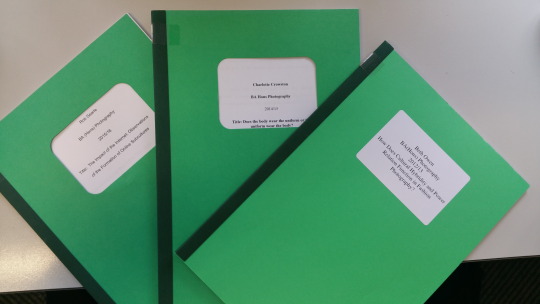
COP2 has been a positive experience to improve my essay writing ability, but in my next COP I would prefer to focus on a topic less theoretical and conceptual, and more related to industry awareness and possibly business practices. I could possibly make the essay more pointed toward to financial, business and commercial aspects of being a photographer - as it will be invaluable when it comes to my post-graduate job applications etc..
0 notes
Text
Visual Work - Shooting and Post Processing
My visual wrok, just like my essay, centres around the abilities of still and moving images to convey narrative. So for the work I produced a video conveying the very simple narrative of a person getting a text message telling them the sender is at the door and needs to be let in.
The narrative is boring but easy to communicate, so it will not be too complicated for me to convey or to be translated into the still images using frame export on Adobe Premier Pro. This is the way in which I will source the still images to accomany the film work. The point of the two being submitted together is to provide commentary on the way in which the two can convey the same narrative.
Kit used:
Canon 5d MKiii
24-105mm f4
50mm f1.4
LED light panel
Tripod
Below are my 4 still images conveying the same narrative as the video in the vimeo link below them.
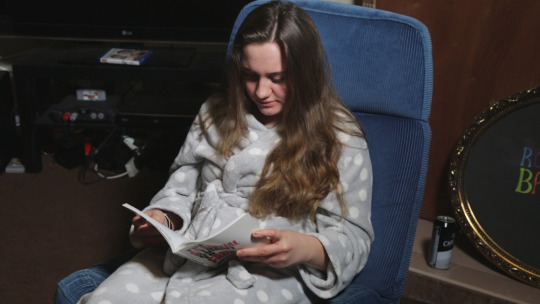
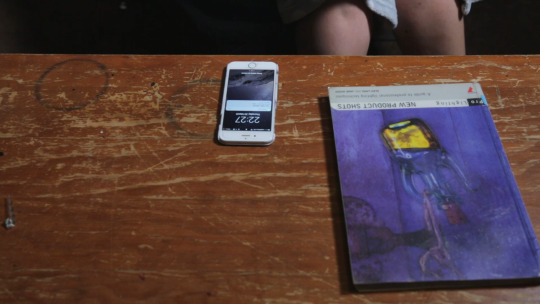

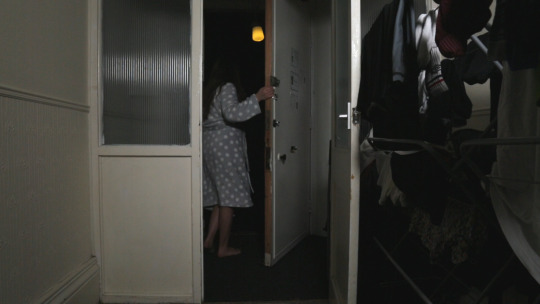
Video (Vimeo) Link:
https://vimeo.com/210269146
The password is ‘photo’
Evidence of processing in Premier
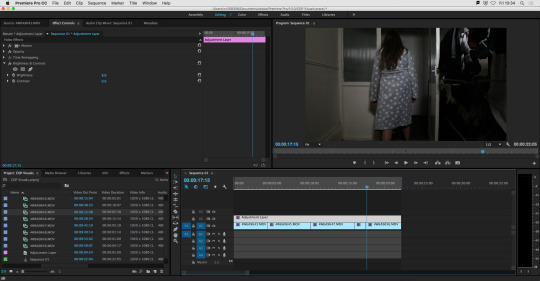
Colour grading and exposure adjustments.
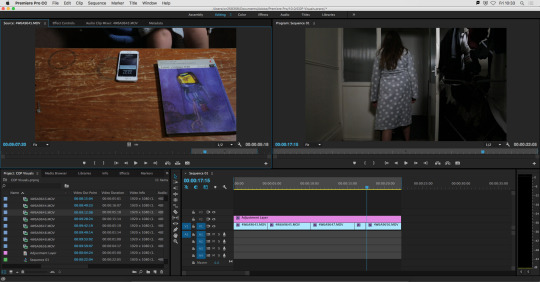
Overview of sequence.
Printing
I wanted to print my still images in a style similar to that of a storyboard strip, in order to link the two mediums again, and also to link to the publication of the Fellini’s still images with ‘The White Sheikh’. There was an issue with the printer, and the final A3 print contains some very fine vertical lines on all of the image. I didn’t have time in my session to re-print so I just left it as it is, in future I would put in place a contingency plan for an issue such as this.
Obviously, the print itself isn’t as dark as this, there is just terrible lighting in the library.
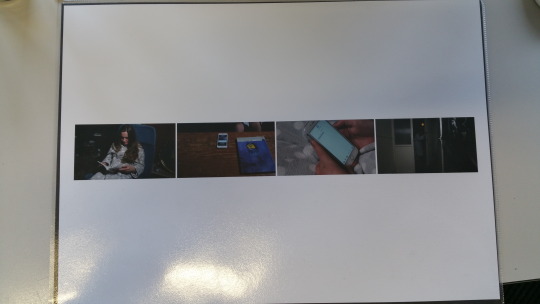
0 notes
Text
Literature Search
Using the library computers I searched for relevant sources for my essay as a starting point. I had to leave the session early to do some freelance work so I only have evidence for one source, but this is a similar technique I used for other sources. Other searches may have been through Google Scholar.
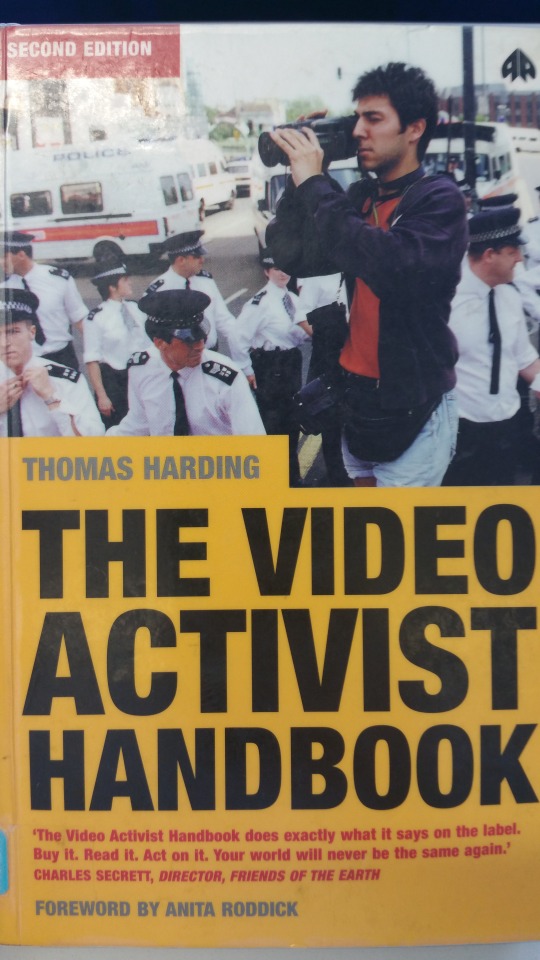
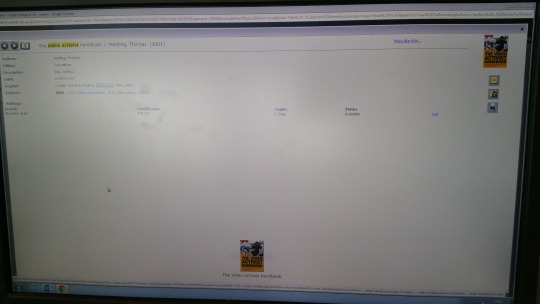
0 notes
Text
Essay Stucture Plan
Still and moving lens-based images have a closely related history, and yet they communicate in very particular ways, especially with regard to the representation and perception of time. Explore some of the ways in which the relationships between still and moving images converge, through the analysis of relevant historical and contemporary examples of practice.
Intro:
I have a start and will do the rest later on when I have a better grasp on the essay.
David Green, Siegfried Kracauer, Roland Barthes, Christian Metz, Peter Wollen, John X Berger, Olivier Richon, Raymond Bellour, Garrett Stewart, David Campany, Jeff Wall, and Victor Burgin.
However, there are ways in which the two interact and converge. This essay will discuss the ways in which the two mediums coexist: at points cooperating to achieve a desired outcome
This commentary will span both historical and contemporary image based mediums and the different, or similar ways in which the mediums are displayed and presented
[What will the essay be about?
What sort of essay will it be?
“This essay will explore/examine/discuss...”
In answer to the question... this essay will argue...”
What is the point of the essay?
To understand/to redefine/to challenge.
What issues will you explore?]
Main Body of Text:
Para One:
Begin putting forward the idea that they are different, support with two of the people I have researched.
David Green
Siegfried Kracaue
‘The single most important factor that distinguishes the two mediums is, of course, that film ‘represents reality as it evolves in time’ and this temporal dimension is indissociable from films ability to capture movement. 11
‘In the end the difference between the two mediums is not relative but absolute. What is denied to photography is seen as the defining factor of film and gives rise to a set of unique possibilities for representing ‘physical reality’ in all of its contingencies and transience.’ 12
[through this whole bit Green is responding to Siegfried Kracauer’s theory of film: the redemption of physical reality, oxford university press 1960]
‘Barthes’ attempt to account for the distinctive phenomenon of the photographic image through such contortion of grammatical tense as that of the notion of a future anterior has not always led to discussions of photography with such equally complex analytical ambitions. What needs to be stressed is the present context, however, is that Barthes reflections on photography contained in Camera Lucida and which in essence are concerned with time (as much as they are inseparable from the subject of death) are conducted in direct dialogue with the medium of film.’ 12
‘Those passages of the text in which he [Barthes] tackles the issues of the photograph’s temporality contain repeated reference to the cinema and it is clear that for Barthes it is only in the comparative distinction with the moving image that photography finds its inimitable identity.’ 15
Barthes ‘having been there’ of photography vs films ‘being there’ idea put forward by Christian Metz, a ‘one time student of Barthes’.
‘The movie spectator is absorbed, not by a ‘has been there, but by a sense of ‘there it is’’.
‘And the reason that film is able to convince us of the actual presence of something, Metz argues, is because of the appearance of movement.’’The reason that Metz offers for this are mainly twofold. Firstly, by presenting us with successive images of objects existence within space, movement lends them a greater sense of corporeality (which for him is the measure of real). In addition, however, Metz argues that whilst we might assume that, rather as a photograph can only offer a trace of what has been, so the the film can only be a trace of a ‘past motion’, nonetheless ‘the spectator always sees movement as being present’. (Christian Metz Film Language: A Semiotics of the cinema, Oxford University Press, 1974. p.8)
‘Because movement is never material but always visual, to reproduce its appearance is to duplicate its reality. In truth, One cannot even “reproduce” a movement: one can only re-produce it in a second production belonging to the same order of reality, for the spectator, as the first. It is not sufficient to say that film is more “living”, more “animated” that still photography, or even that filmed objects are “materialised”. In the cinema the impressions of reality is also the reality of impression, the real presence of motion’. Ibid p.9
Para Two
Support with two more of the relevant theorists I have looked at. Still looking at the idea that they are different.
‘Metz Kracauer and Bazin ‘[whilst] cinema is technologically and aesthetically dependant upon photography, ultimately it is seen as ontologically distinct. The differences between the two mediums appear ass stark and absolute: on the other hand we have movement that not only presents but also lends to the image a ‘presence’ that is associated with life, and, on the other hand, we have a moment frozen in time and an immobility that is lodged within an ever-receding past that can only testify to an absence that carries with it the spectre of death. (17)‘Peter Woolen exploring the relationship between time and the photograph: ‘Clearly there is not intrinsic ‘tense’ of the still image, though it can order and demarcate time’ (Peter Wollen ‘Fire and Ice, John X Berger and Olivier Richon (Eds) Other Than Itself: Writing Photography, Cornerhouse Publications, Manchester, 1989.
‘In his short essay Wollen tentatively lays out a schema for the analysis of various kinds of photography using what linguistic theorists refer to as ‘aspect’. What theories of ‘aspect’ allow for, according to Wollen, is the description and analysis of photographs in terms of ‘states’, ‘processes’, or ‘events’ in which notions of change and duration. Of the ordering and demarcation of time, of narrativity and so forth, are still available but without necessarily being enmeshed in the ridged polarisation of past and present tense. Ad wollen implies, and what many of the essays in this volume also suggest, is that photography's relationship to time is a far more complex affair than is often granted.’
Raymond Bellour (‘The Pensive Spectator ‘, wide angle vol. 9, no. 1`, 1987, p.10) ‘grants that photographs represented as objects in a film are used to advance a story and that they are therefore caught up in the time of an unfolding narrative, their appearance nonetheless is problematic for the film’s diegesis.’ Examples: the still image acts as an ‘emblematic motif around which the plot of the film might hinge ( [...] remembrance [...]), yet at that precise moment the temporal flow of the film is arrested, its narrative momentum suspended, albeit briefly.’ ‘ At this point [...] the viewer is made aware of the kinds of temporality, that which belongs to the film and the intrinsic forward movement of the narrative, and that is the time of viewing the film and which carries the phenomenological force of the here and now. Thus Paradoxically it is the photograph caught on film that directs our attention to the present - even as it functions within the narrative of the film in accordance with its predominant cultural forms to symbolize the past.’
Garrett Stewart (‘Photo-gravure: Death, Photography and Film Narrative’, wide angle, vol. 9, no. 6, 1987 p.17) argues that ‘Ballour’s argument is constrained by the cinematic phenomena he uses. The placing of a photograph as an identifiable object within the illusory space of a film, even where that object may be co-exensive with the screen frame, whilst not without ramification for film’s narrative spatio-temporal diegesis, ultimately leaves it in place.’. He puts forward the idea that this is the ‘instance of a true freeze frame’ (Green), where ‘the difference in question is between imaged motionlessness and the motionless image’ (Stewart). And ‘since the freeze-frame is actual stasis, and not merely its representation, its appearance on the screen is a moment of hiatus, not only in the temporal momentum of the film’s narrative but also, potentially, in the illusion of reality in which it is bound’. Allowing for ‘cinematic reflexivity’, by mimicking the properties of the still image to take the audience out of the film. Becoming ‘transparent to itself, but only in the moment, and at the price , of its cancelled succession its negation as a moving image’. (steward, page 19).
Para Three
Images
Don’t put them in if they’re not addressed in the essay.
Either put them in the text or put them on separate pages at the end.
For each image include Author (photographer), Title, Date, Size (if appropriate).
Make sure images are of a high enough resolution to print properly, and don’t crop sections unless you do so on purpose and state that you have done this.
Give example of photographers such as Wall, Sherman and Crewdson as being able to convey narrative without the use of moving image.
He calls such pictures ‘accidents of reading’.
Jeff Wall
A ventriloquist at a birthday party in October 1947 1990
Transparency in lightbox 2290 x 3520 mm
Cinematographic photograph
Collection of the artist. Courtesy Marian Goodman Gallery, New York
© The artist
Jeff Wall
Insomnia 1994
Transparency in lightbox 1722 x 2135 mm
Cinematographic photograph
Hamburger Kunsthalle, Hamburg
© The artist
ARTIST
Cindy Sherman born 1954
MEDIUM
Photograph, gelatin silver print on paper
DIMENSIONS
Image: 710 x 955 mm
support: 820 x 1060 mm
support, secondary: 920 x 1140 mm
frame: 938 x 1165 x 40 mm
COLLECTION
Tate
ACQUISITION
Presented by Janet Wolfson de Botton 1996
REFERENCE
P11518
Cindy Sherman
Untitled #153
1985
Medium
Chromogenic color print
Dimensions
67 1/4 x 49 1/2" (170.8 x 125.7 cm)
Credit
Joel and Anne Ehrenkranz Fund
Object number
806.1995.x1-x2
Copyright
© 2017 Cindy Sherman
Department
Photography
Untitled
'Beneath the Roses'
2006
Framed: 58 1/2 x 89 1/2 in. (148.6 x 227.3 cm)
Archival pigment print
Untitled
'Beneath the Roses'
2006
Framed: 58 1/2 x 89 1/2 in. (148.6 x 227.3 cm)
Archival pigment print
Para Four
Give example of the barcode project and Hiroshi as the convergence of the two mediums
Bring in support from relevant theorists.
Hiroshi Sugimoto since 1976 ‘Theatres’ large format in cinema exposing the whole film to create a white screen illuminating the room evenly. This highlights the passing of time in a still frame as the exposure would not be visible without the 2 hours of exposure time. (‘life is given to the photograph through the death of the film’. This is similar to the ‘Movie Barcode’ images seen below
9/10
Artist:
Hiroshi Sugimoto (Japanese, born 1948)
Title:
Pennsylvania Theatre, 1978
Medium:
Photographs, Gelatin silver print
Size:
42 x 54 cm. (16.5 x 21.3 in.)
Catalogue:
De Primi Fine Art SA Inventory Catalogue, ARTPARIS 2011
Price:
35,000–40,000 USD
Movement:
Contemporary Art
Para Five
Give opposing argument by linking to the previous points and putting forward other theorists points of view
Link paragraphs
The first sentence of each new paragraph needs to relate to the previous paragraph – this lends structure and flow to the essay.
Get to the point!
The essay must be analytical, so use biographical information about artists that you reference sparingly, unless pertinent to your analysis and argument.
What is the context?
Provide information to place the issue, practice or theory in context. This might be technological, cultural, social, political, art historical, or philosophical. 5A1 Critical Awareness.
What have others said?
You need to use a minimum of 5 quotes or paraphrases from your research in your essay. Quotes can come from many different sources, such as documentaries, interviews with photographers, theorists, curators, industry professionals, websites, magazine or journal articles. Draw on references, understanding and information developed from your literature search and review. 5C1 Research.
If you are arguing your point of view it can be relevant to consider an opposing view to your own – all views must be founded on research and should be supported by quotes – sometimes finding quotes that challenge your view can help you argue more coherently. 5B1 Analysis.
The examples of relevant practices
Who? When? What? How do these examples of photographic practice or theory embody the issues that you are exploring? What are they? What impact have they had? Describe these clearly before you go onto analyse them. 5A2 Innovation (relationships between theory and practice, also evidenced in your blog reflections on your own visual work).
Wall, Sherman and Crewdson all convey narrative through still images, without the need to convey a passing of time in order to do so.
The barcode project and Hiroshi’s theatres convey the passing of time through still images, but do not actually convey narrative. They are convergence but not cooperation (for lack of a better term).
Then to look at filmmakers such as Casey Neistat and their use of time lapse photography in order to convey and push forward narrative by showing the passage of time.
Also that bloke from the turn of the century who used the spinning photographs and perspective to show movement.
Moybridge zoetrope
Conclusion (Around 250-500 words)
Did you do what you set out to?
What have you discovered?
Revisit the introduction. Conclusions can clarify, restate, extend, summarise but they should generally not introduce new content.
Conclusions can end with a quote.
0 notes
Text
Literate Review
Harvard Ref
1. Green, D. and Lowry, J. 2006. Stillness and time. Brighton: Photoworks. p. 97-112.
2. Burgin, V., quoted in, Amelunxen, H., 1996. Photography after photography: memory and representation in the digital age. Amsterdam:G+B Arts. (p.98)
Key Concepts
1. [Film] ‘represents reality as it evolves in time’
2. ‘And we come to know what media are less by looking for their pure centres than their disputed boundaries.’
Comments
1. This quote argues the reason for which film is see as representative of reality, more so than still photography.
2. This quote makes a statement in favour of the idea that Still and Moving imagery contain burred borders that are not concrete or separate.
Application
1. Can be used to support this idea, or argue for the superiority of film over still in conveying narrative.
2. Can be used a good concluding point in favour of the complexity of the overlapping of mediums, especially as it is not an evidence based point and instead relies on the strength of the author for clout.
Page number
1. 7
2. 98
0 notes
Text
Visual Response - Initial Ideas and Reseach
Through on-going blog posts document, review and appraise key developments in your visual work, and make evident its’ relevance to your essay title through sustained reflections. Consider your rationale for your choice of medium and format, techniques, approaches and output.
For my visual response to the essay I want to produce both a video and still image series that convey the same narrative. This will display the way in similarities in the two mediums abilities to convey narrative, regardless of the fact that still imagery is at the disavantage of not being able to convey a realistic representation of time passing.
I am inspired by the historical photographic work of Federico Fellini in Lo Sceicco Bianco (The White Sheikh 1952). During the making of the film, while actors would perform a scene to a moving camera and at undetermined intervals the director would shout ‘hold it!’ signalling the actors and actresses to free in motion for enough time for a still image to be taken. These images were compiled into a comic book style board to accompany the produced film and were very popular in mainland Europe. This is a ‘subtle and nuanced commentary on acting, posing, movement and stillness’ by giving a still insight into how the film was made through the medium of still photography. (p.99-100/2-3)
(Campany, David (2006) Posing, acting and photography. In: Stillness and time: photography and the moving image. Photoworks / Photoforum, Brighton, UK, pp. 97-112. ISBN 1903796180)
Instead of simply copying this method however, I will create a contemporary response to the historical and dates practices used by Fellini. Whereas he used large format film cameras for the stills and a cinema 35mm camera for the moving image piece, I will utilise the capabilities of the 21st century DLSR to shoot both mediums on the same format. To extend this metaphore further I will possibly actually consider simply selecting frames from the videos in Adobe Premier and save them as .tif files to be used as still photographs.
0 notes
Text
A ‘Subtitle’ or variable to explore in my essay - NARRATIVE
I have chosen to bring in a measurement of narrative in my essay. Narrative is an element of communication in both still and moving image and will be a strong variable to measure the two against each other through. Using this subtitle or subfocus will allow the comparisons between the two to be more specific and less broad, and will also obviously influence the research I do fr the essay in terms of where to look for sources.
0 notes
Text
Which question to do?
I have decided to choose the third question to answer for my essay. The title is:
“Still and moving lens-based images have a closely related history, and yet they communicate in very particular ways, especially with regard to the representation and perception of time. Explore some of the ways in which the relationships between still and moving images converge, through the analysis of relevant historical and contemporary examples of practice.”
The reason for me choosing this essay title is that I am interested in moving into the medium of moving image in my professional work over the span of this module. And I feel that as is the case with all aspects of photography, there is a need to build a solid foundation of theoretical and academic knowledge in my practice before I can fully appreciate my approach to the subject area.
Some of the key points of this question that are important to understand in order for me to successfully answer the question are as follows:
- Still and moving image - comparison between the two
- history - look at the historical contexts as well as contemporary
- communicate - the way we as the audience perceive them
- representation and perception of time - this essay will be based on this as a variable to compare
- converge - show both the similarities and differences
0 notes